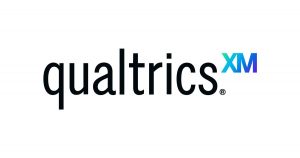Workforce challenges in the public sector are not just an “HR problem.” Every one of us interacts with our government in some way — and these experiences shape our perception of public sector organizations as potential employers.
“We interact with our government all the time, as customers, constituents, residents, visitors — and that develops for us a certain … brand perception of what it’s like to be an employee,” said Sydney Heimbrock, Chief Industry Advisor for Government, with Qualtrics, a software firm whose HR platform gives agencies a holistic view of their employee experiences.
The customer experience that government provides today will affect its workforce challenges tomorrow, she said. And agencies can’t afford to get workforce management wrong.
“Depending on where you are,” Heimbrock said, “the average cost to hire is between $13,000 and $18,000 per [employee]… But if you have a leaky bucket, they’re going to leak right back out. So, you can focus on recruitment and hiring trying to bring people in … [to compensate for a] massive attrition rate, but what are you doing to keep them there, so you’re not always behind?”
Insights to Outcomes
Agencies have real constraints that impact employee engagement and satisfaction. Legacy infrastructure and IT, and legislative and regulatory mandates, can pose problems for mission-oriented government employees.
Still, leaders can “infuse a human-centered approach into how [they] think about managing people,” she said. Supervisors have authority, discretion and tools they could be using to improve employee experiences in order to attract and retain talent.
“It’s about listening … and understanding what [employees] want [and] what motivates them, versus what they are experiencing,” she added. Those insights help agencies close gaps and remove barriers to good employee performance and happiness — such as burnout and lack of work-life balance.
“If we fail to listen and fail to design for what people need and want,” Heimbrock said, “they will go somewhere else. And they’re proving that every day now.”
Beyond Surveys
On the surface, an employee engagement survey is a poor measure of EX.
Many organizations conduct engagement surveys annually — but fail to take meaningful action on the results, which steadily erodes trust over time.
What is valuable, and what Qualtrics provides, is a near-real time analysis of experience data across employee moments that matter, said Heimbrock. “That gives [leaders] the ability to take action either to solve a short-term, quick-fix problem or to uncover deeper insights about … [what] people really want and how [to] make that happen for them.”
Some knowledge is life-changing. For instance, a large law enforcement agency is using the Qualtrics platform to assist employees who struggle with mental health.
People join government because they believe in the mission and want a role in it, Heimbrock said. In fact, “there’s a dimension of love that goes on in the employer/employee relationship,” she said, and “organizations that embrace [the importance of] employee experience really just recognize this phenomenon…. They design for it.”
This article appeared in our guide, “Tools and Tactics for Employee Engagement.” For more tips on improving you employee experience, download it here:






Leave a Reply
You must be logged in to post a comment.